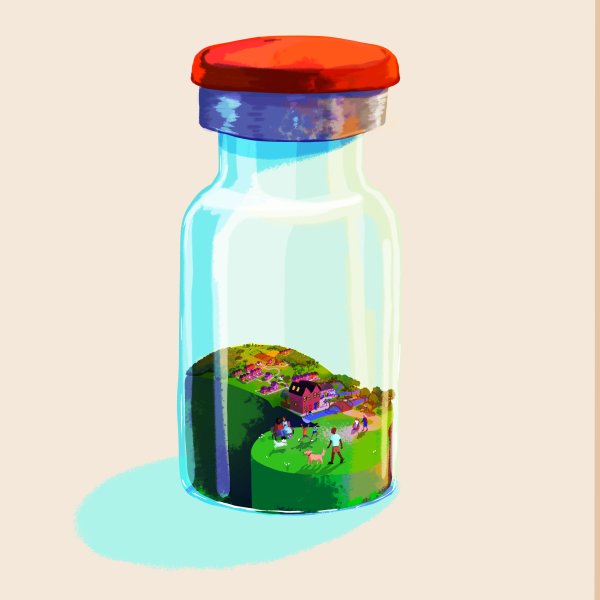Advanced Laser Spectroscopy to detect falsified vaccines
An international consortium of multidisciplinary researchers and specialists has developed a new method to counter the problem of COVID-19 vaccine falsification.

There have been numerous instances of vaccine supply chains being infiltrated by falsified products, both for vaccines before the pandemic and for COVID-19 around the globe1. Since the emergence of COVID-19 and its immunisation programs worldwide, there have been over 184 public domain reports across 48 countries of diverted and substandard or falsified COVID-19 vaccines2.
Apart from endangering the public, by not effectively protecting people from COVID-19, these incidences also risk undermining trust in vaccines. As such, it is critically important that we maintain integrity of supply chains by detecting falsified products rapidly and effectively.
To address this global health issue of falsified and substandard medical products, the World Health Organization (WHO) Member States adopted a PREVENT, DETECT, and RESPOND strategy.
Currently though, there are no effective, readily accessible systems with rapid turnaround for vaccine identification to screen stocks at multiple locations in the supply chains. The detection of falsified vaccines relies on analysis that can only be performed in specialised laboratories.
In response to the need to develop new methods to screen stocks, a consortium of world leading experts convened in 2020 consisting of scientists of multiple disciplines from:
- Oxford University Nuffield Department of Medicine, Department of Biochemistry, Department of Chemistry and Kavli Institute for Nanoscience Discovery
- Science and Technology Facilities Council (STFC), part of UK Research and Innovation (UKRI)
- Serum Institute of India
- World Health Organization, Geneva
- Agilent Technologies
- University of Huddersfield
- University of East London
Professor Paul Newton co-senior author on the study, said “This study is part of the continuing effort by the Medicine Quality Research Group to conduct research to inform policy and interventions to try to ensure that medications and vaccines used by millions across the group are of high standard and trustworthy”. Professor Paul Newton is Professor of Tropical Medicine at Oxford University’s Nuffield Department of Medicine, and Head of the Medicine Quality Research Group at the Centre for Tropical Medicine and Global Health.
In line with WHO strategy, the multidisciplinary and multi-institutional research consortium (led by the Medicine Quality Research Group) has developed a new method of effectively and efficiently detecting falsified vaccines. The findings are described in the journal Vaccine. Their study demonstrates the viability of handheld Spatially Offset Raman Spectroscopy (SORS) to rapidly authenticate COVID-19 vaccines through unopened vaccine vials.
SORS performs chemical analysis by shining a laser light into an intact vial of the vaccine and inspecting the light emanating from the vial to indicate the presence of different ingredients. SORS was originally invented and developed into a spinout company by the STFC Central Laser Facility. This company was acquired in 2017 by Agilent Technologies, where the technique continues to be developed for various applications.
"The use of the handheld Resolve's SORS technology for swift and non-intrusive analysis within sealed containers is ground-breaking, attributed to both SORS technology, and the inherent sensitivity of the optical design" said Dr Rob Stokes, Field Detection Marketing Director at Agilent Technologies. "This approach not only advances vaccine authentication but also sets the stage for future high sensitivity analysis within sealed containers across diverse fields.”
SORS devices are currently used to screen for hazardous substances at airports and used widely by fire officers, military, border protection and law enforcement. Apart from developing reference spectral libraries, only minor modifications in sample compartment and software adaption are required for its deployment to identify falsified vaccines. That SORS can effectively screen for falsified vaccines without opening the vial is a major advantage in terms of speed of detection and ability to use vaccines that pass the SORS testing.
“SORS is poised to become an important tool to protect against falsified vaccines” said Professor John Collier, Director of the STFC Central Laser Facility. “Since first being developed at the STFC Central Laser Facility, this innovative technology continues to find new areas of application which could now include empowering governments and healthcare organisations to safeguard public health. It is a prime example of the enormous benefits of responding to global health challenges with strategic technological innovation.”
Although this study focusses only on COVID-19 vaccines, the method it describes may also be used for authenticating other vaccines, liquid, and solid medicines. Further research is needed with more vaccines and to evaluate its effectiveness at various points in supply chains.
With the increasing importance of vaccines for many diseases with pandemic potential and their inequitable distribution, innovative tools to empower inspectors in detecting falsification such as these are a vital asset.
The full study can be read in the latest edition of Vaccine.
